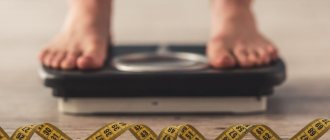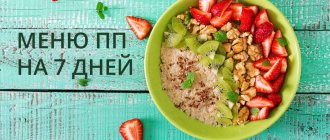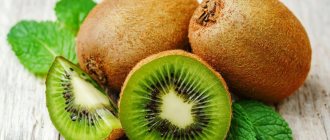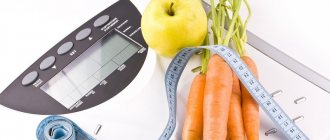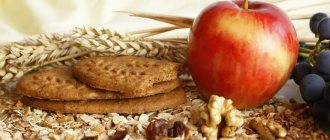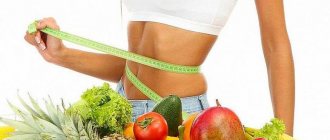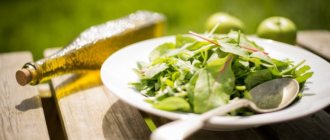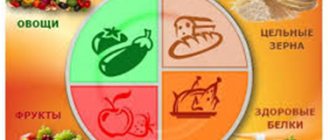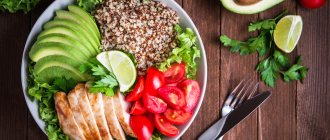Types of osteoporosis
It is a mistake to believe that this disease develops in adulthood: after 50 years, the disease is diagnosed in approximately every fifth woman and every third man. Bone fragility associated with a lack of calcium in the body affects children, adolescents, and young people under the age of 30. There are several types of this disease:
- juvenile - occurs in children from 8 to 15 years old;
- postmenopausal - typical for women aged 50 years and older;
- idiopathic - it affects mature men, the origin of the pathology is still not clear;
- senile - occurs in older people of both sexes.
Causes of osteoporosis and risk factors
The causes of osteoporosis are complex, but the main one is a violation of calcium phosphorus metabolism in the body, which is manifested by demineralization of bones and teeth. Changes in calcium levels in the blood and urine, as well as excess calcium deposits in bones and soft tissues. These processes occur as a result
:
- hypofunction of the parathyroid glands (PTH deficiency);
- hypersecretion of thyroid hormone;
- slowing down the absorption of calcium in the walls of the small intestine;
- vitamin D3 deficiency;
- disturbances in the formation and flow of bile into the intestines (bile and bile ducts);
- the intake of large amounts of fat in the patient’s body and protein deficiency.
Persistent hypocalcemia leads to impaired neuromuscular excitability and, as a result, leads to seizures. Lack of calcium also inhibits the output of the posterior lobe of the pituitary gland and the adrenal medulla, and immunity decreases.
There are many risk factors for osteoporosis
:
- Genetic forms
. Europeans get sick more often, women get sick more than men. In old age, you can more often meet a patient with osteoporosis than in young people. High growth is also a risk factor, low body weight, etc.
- Endocrinological factors
. Hormonal imbalance, infertility, diffuse endemic goiter, stage 1 diabetes mellitus, hypothyroidism, rheumatoid polyarthritis, etc.
- Wrong lifestyle
. Bad habits, adynamia, unhealthy diet with a predominance of fats, lack of calcium, phosphorus, vitamins A, C and D in food
- Long-term use of toxic medications
, hormones, tetracycline antibiotics, cytostatics, etc., as well as the presence of severe pathology in the patient’s body, these are autoimmune diseases, diseases of the blood system and hematopoietic organs, digestive disorders, organ transplantation and psychosomatic risk factors (severe depression, neuroses, etc.)
Reasons for the development of the disease
In most cases, problems with bone tissue arise due to improper and unbalanced nutrition. Less commonly, due to regular use of certain groups of medications that help wash calcium out of the body. Factors that influence bone fragility also include:
- genetic predisposition;
- disturbances in the functioning of the endocrine and nervous systems;
- chronic inflammatory diseases;
- blood problems;
- systemic and chronic diseases.
Indications
vitamin D deficiency , in old age (after 65 years), in menopause , with a family history, fragility of bones and a tendency to fractures (a history of bone fractures) , during pregnancy , with diseases of the gastrointestinal tract and joints, hypoparathyroidism , psoriasis , with endocrine diseases, spasmophilia , with high physical and psychological stress.
How to recognize osteoporosis?
At the initial stage, the disease develops asymptomatically; the presence of osteoporosis can be judged by fractures and compression injuries. Most often we are talking about problems with the spine - pain appears in the back and chest, and problems arise when walking. Indirectly, osteoporosis can be indicated by decreased height, heartburn and chest pain (the so-called symptoms of reflux disease), a protruding stomach, subsidence of the spine, in which the lower ribs come into contact with the pelvic bones. You should also pay attention to frequent and causeless headaches, surges in blood pressure, back pain when walking or sitting for long periods of time, numbness in the hands, and general weakness. A sure sign of calcium being washed out of the body is problems with teeth and hair, splitting nails, although this may not always indicate brittle bones.
Weight loss can indicate osteoporosis, since due to deformation of the spine and, accordingly, internal organs, a person reduces the amount of food consumed, since even a light snack gives a feeling of fullness. Mood swings caused by hormonal imbalances should not be discounted. Most likely, in this case, osteoporosis will be a background disease, so it is important to undergo a comprehensive examination and take measures to relieve the disease.
Menu (Power Mode)
Here is a sample menu for several days:
Example 1
| Breakfast |
|
| Lunch |
|
| Dinner |
|
| Afternoon snack |
|
| Dinner |
|
Example 2
| Breakfast |
|
| Lunch |
|
| Dinner |
|
| Afternoon snack |
|
| Dinner |
|
Example 3
| Breakfast |
|
| Lunch |
|
| Dinner |
|
| Afternoon snack |
|
| Dinner |
|
Features of disease diagnosis
In most cases, osteoporosis is detected after the patient consults doctors with a fracture of the collarbone or femoral neck or serious spinal deformity. Therefore, it is important for people who are at risk for this disease to undergo regular medical examinations. The risk of bone fragility is very high in menopausal women, overweight people, and in teenagers who lead a sedentary lifestyle. All people aged 65 years and older should be examined regularly - they automatically fall into the risk group.
Osteoporosis can be detected by densitometry, a procedure aimed at determining bone density using ultrasound or x-rays. Ultrasound is considered a more informative diagnostic method, as it allows one to determine a decrease in bone tissue density at the level of 3–5%. X-rays can detect changes in bones, provided that their density has decreased by about 30%. Blood and urine tests may be prescribed as additional types of diagnostics.
What is osteoporosis: symptoms and diagnosis
This is a complex multi-cause progressive metabolic disease of the human skeleton, which is characterized by a decrease in bone density and an increase in bone fragility, with a predominance of catabolic processes over regeneration. Clinically, this is manifested by a decrease in bone strength and the risk of fractures. Osteoporosis ranks fourth among causes of mortality after diseases of the cardiovascular system, oncology and diabetes. Frequent lesions are the spine, bones of the arms and legs. When metabolic processes in the body are disrupted, the disturbance of the metabolism of calcium and phosphorus, vitamin C, D, as well as other important essential substances that do not enter the body as a result of emerging pathologies or other reasons is of decisive importance. This is a deficiency of vitamins A, E, K, A, silicon, manganese, zinc, selenium, boron, vanadium.
Symptoms of osteoporosis:
- Frequent bone fractures near joints.
- Poor posture.
- Pain in the spine or bones of the arms and legs. Palpation is characterized by muscle tension and pain behind the spinal column.
- Night cramps of the calf muscles.
- Dental disease.
- Brittleness and fragility of bones.
- Loss of body weight.
- Tachycardia.
- Early manifestation of gray hair.
Initial forms of osteoporosis may be asymptomatic. If you suspect osteoporosis
:
Shortening of the limbs of the damaged joint may be detected.
- Densitometry is prescribed to assess bone density.
- X-rays of joints are performed in two projections. The image reveals an increase in the transparency of the bone tissue or the presence of outgrowths in the bone tissue in the form of spines. Fractures of the bone near the joint.
- Ultrasound reveals a decrease in the cartilage layer of the joints and impaired circulation.
- CT provides a complete picture of layer-by-layer dysfunction of the examined joint.
- MRI allows you to obtain a three-dimensional model of the bone, calculate its volume, density and evaluate the distribution of minerals.
- A biochemical examination shows the amount of calcium in the blood, parathyroid hormones (PTH), calcitonin, the amount of vitamin D. Also the amount of female sex hormones, androgens and thyroid hormones.
- For differential diagnosis of oncological process, a biopsy of the iliac wing is used. If complex chemical processes are suspected, a complete biochemical examination of the patient is performed.
How is the disease treated?
Reducing the risk of fractures is the main goal of physicians working with patients diagnosed with osteoporosis. The basis is drug therapy aimed at reducing pain and preventing bone tissue destruction. In addition, calcium-containing preparations are used.
The list of therapeutic measures often includes:
- Physiotherapy. A set of exercises is individually selected for the patient to help reduce pain and strengthen muscles.
- Hydrokinesitherapy - physical exercises in water.
- Mechanotherapy is a hardware effect on certain muscle groups in order to strengthen them.
- Training for coordination of movements (relevant for older people, who receive most injuries due to tripping or incorrectly calculating the distance to the nearest object).
The set of therapeutic and rehabilitation measures is selected individually and depends on the patient’s age, physical condition, and general well-being. However, without exception, all people who are faced with bone fragility are prescribed a special diet. Its principle is simple: you need to include in your diet those foods that strengthen bone tissue, and exclude everything that can lead to its destruction. At the same time, nutrition for osteoporosis in women will differ significantly from the diet for osteoporosis in men.
Treatment of osteoporosis in older women
It is very important to start treating the disease as early as possible. This will prevent the development of various complications and disabilities.
Diet
Proper nutrition is of no small importance in the treatment of osteoporosis. A therapeutic diet requires adherence to the following rules:
- the menu should contain food containing a large amount of calcium;
- refuse or minimize the amount of salty foods and alcoholic beverages;
- consume fermented milk products in large quantities;
- include foods that contain a lot of phosphorus, potassium, magnesium.
Exercise therapy and gymnastics
Correctly designed therapeutic exercises play a very important role in the recovery of patients after a fracture. Rehabilitation therapy must also include massage and physical therapy.
Therapeutic gymnastics involves resistance and stretching exercises - expander, horizontal bar. To evenly distribute the load on the spine, it is recommended to wear orthoses or corsets.
Medications
For therapy, doctors prescribe regulators of phosphorus-calcium metabolism. Such drugs include:
- Calcytocinins. These are substances similar to the hormones produced by the thyroid gland. These hormones slow down the thinning of bone structures, activate bone formation, and have a pronounced analgesic effect. Such drugs include Ossteover, Vepren.
- Biosphosphonates. With their help, the processes of bone loss are inhibited. These drugs help in the remineralization process. These include Bonefox, Etidronate.
- Recombinant human hormones that stimulate bone production. For example, Forsteo.
- Fluoride preparations, which improve stimulation of the formation of bone structures.
If there are severe symptoms of the disease, a treatment regimen similar to the treatment of arthrosis and arthritis is drawn up:
- non-steroidal anti-inflammatory drugs;
- painkillers;
- muscle relaxants;
- glucocorticosteroids;
- pain blockades;
- chondroprotectors.
Thanks to the listed medications, new bone mass is formed and bone destruction and thinning are prevented.
Physiotherapy
The main methods of physiotherapy are:
- diadynamic currents;
- UHF;
- interference currents;
- electrical stimulation;
- ultrasound;
- magnetic therapy;
- balneology;
- ozokerite.
ArthroMedCenter uses the following effective procedures for the treatment of osteoporosis:
- Hivamat therapy. This procedure improves blood circulation and activates recovery processes.
- Electrophoresis. Thanks to the procedure, medicinal substances act more effectively on the damaged area of bone tissue.
- SMT therapy. The procedure improves blood circulation and initiates regeneration processes in bone tissue. The overall tone of the body increases, metabolic processes occur faster.
Traditional methods of treatment
The most effective folk remedies in treating the disease are:
- dill infusion;
- infusion, decoction or oil of golden mustache;
- onion peel decoction;
- alcohol infusion from comfrey rhizome;
- dandelion decoction;
- mumiyo;
- blue clay;
- grated eggshells with lemon juice;
- decoction of burdock rhizome;
- horsetail infusion;
- centaury decoction;
- Chernobyl, sleep-grass, woodruff - collection for decoction;
- jujube, moss, speedwell, horsetail, aster - collection for infusion;
- field grass, calamus, fragrant woodruff, celery - collection;
- sage, alfalfa, horehound, red clover, fenugreek - herbal collection.
What foods will definitely need to be excluded from your diet?
There is a fairly large group of foods for osteoporosis in women and men that will have to be excluded from the diet. First of all, these are chocolate, cocoa, coffee, sweets and flour products. Alcohol, sweet carbonated drinks, fatty meat (especially lamb), and unrefined sunflower oil have an adverse effect on bone health. You will also have to give up margarine and mayonnaise, butter, and any fatty sauces.
Products whose consumption should be limited include salt, various marinades and pickles, smoked meats and fast food. Do not overuse rhubarb and spinach, which contribute to the leaching of calcium from the body.
Authorized Products
Foods containing large amounts of calcium include:
- dairy products, in this case, it is preferable to consume fermented milk products with a low fat content (kefir 1%, yoghurt, fermented baked milk, low-fat sour cream, cheeses without preservatives, cottage cheese 0.5%) since fats slow down the process of calcium ;
- bread (rye/wheat and wholemeal);
- white fish (sardine, tuna, pike perch, trout) and seafood (shrimp, mussels, squid, octopus);
- meat: lean pork, veal, boiled chicken;
- vegetables, fruits and herbs, both fresh and processed (peppers, carrots, broccoli, zucchini, beans, zucchini, olives, green peas, pumpkin, apricots, oranges, dates, green salad, parsley, dill), seeds, nuts and berries (pistachios, sesame seeds, dried apricots, hazelnuts and walnuts, poppy seeds, raspberries, almonds).
Foods High in Calcium
Proper nutrition is ensured by including in the diet:
- Products containing vitamin D : egg yolks, fish caviar, fatty types of sea fish (halibut, salmon, tuna), butter.
- Foods high in magnesium: all types of nuts, bananas, seaweed, veal, cereals, green leafy vegetables, legumes, oatmeal, buckwheat.
- Zinc-containing products: herring, millet, oats, celery (root and leaves), pumpkin and sunflower seeds, seafood, legumes.
- Products high in vitamins A, B, C and K: citrus fruits (oranges, grapefruits, lemons), peppers, black currants, blackberries, rose hips, buckwheat, cabbage, bananas, carrots, oats, legumes, vegetable oils.
Table of permitted products
| Proteins, g | Fats, g | Carbohydrates, g | Calories, kcal | |
Vegetables and greens | ||||
| boiled peas | 6,0 | 0,0 | 9,0 | 60 |
| green peas | 5,0 | 0,2 | 13,8 | 73 |
| zucchini | 0,6 | 0,3 | 4,6 | 24 |
| broccoli | 3,0 | 0,4 | 5,2 | 28 |
| potato | 2,0 | 0,4 | 18,1 | 80 |
| carrot | 1,3 | 0,1 | 6,9 | 32 |
| cucumbers | 0,8 | 0,1 | 2,8 | 15 |
| olives | 0,8 | 10,7 | 6,3 | 115 |
| salad pepper | 1,3 | 0,0 | 5,3 | 27 |
| parsley | 3,7 | 0,4 | 7,6 | 47 |
| iceberg lettuce | 0,9 | 0,1 | 1,8 | 14 |
| celery | 0,9 | 0,1 | 2,1 | 12 |
| tomatoes | 0,6 | 0,2 | 4,2 | 20 |
| pumpkin | 1,3 | 0,3 | 7,7 | 28 |
| dill | 2,5 | 0,5 | 6,3 | 38 |
| beans | 7,8 | 0,5 | 21,5 | 123 |
| zucchini | 1,5 | 0,2 | 3,0 | 16 |
Fruits | ||||
| apricots | 0,9 | 0,1 | 10,8 | 41 |
| oranges | 0,9 | 0,2 | 8,1 | 36 |
| grapefruit | 0,7 | 0,2 | 6,5 | 29 |
Berries | ||||
| raspberries | 0,8 | 0,5 | 8,3 | 46 |
| chokeberry | 1,5 | 0,2 | 10,9 | 55 |
| rose hip | 1,6 | 0,0 | 14,0 | 51 |
Nuts and dried fruits | ||||
| nuts | 15,0 | 40,0 | 20,0 | 500 |
| sesame | 19,4 | 48,7 | 12,2 | 565 |
| dried apricots | 5,2 | 0,3 | 51,0 | 215 |
| poppy | 17,5 | 47,5 | 2,0 | 505 |
| almond | 18,6 | 57,7 | 16,2 | 645 |
| dates | 2,5 | 0,5 | 69,2 | 274 |
| pistachios | 20,0 | 50,0 | 7,0 | 556 |
Cereals and porridges | ||||
| buckwheat (kernel) | 12,6 | 3,3 | 62,1 | 313 |
| rice | 6,7 | 0,7 | 78,9 | 344 |
Bakery products | ||||
| wheat bread | 8,1 | 1,0 | 48,8 | 242 |
| bran bread | 7,5 | 1,3 | 45,2 | 227 |
Dairy | ||||
| kefir 1% | 2,8 | 1,0 | 4,0 | 40 |
| cream 10% (low fat) | 3,0 | 10,0 | 4,0 | 118 |
| Ryazhenka | 2,8 | 4,0 | 4,2 | 67 |
| yogurt | 4,3 | 2,0 | 6,2 | 60 |
| natural yogurt 2% | 4,3 | 2,0 | 6,2 | 60 |
Cheeses and cottage cheese | ||||
| cottage cheese 0.6% (low fat) | 18,0 | 0,6 | 1,8 | 88 |
Meat products | ||||
| lean pork | 16,4 | 27,8 | 0,0 | 316 |
| veal | 19,7 | 1,2 | 0,0 | 90 |
Bird | ||||
| boiled chicken | 25,2 | 7,4 | 0,0 | 170 |
Eggs | ||||
| chicken eggs | 12,7 | 10,9 | 0,7 | 157 |
| quail eggs | 11,9 | 13,1 | 0,6 | 168 |
Fish and seafood | ||||
| Red caviar | 32,0 | 15,0 | 0,0 | 263 |
| cod roe | 24,0 | 0,2 | 0,0 | 115 |
| squid | 21,2 | 2,8 | 2,0 | 122 |
| crucian carp | 17,7 | 1,8 | 0,0 | 87 |
| carp | 16,0 | 5,3 | 0,0 | 112 |
| crab meat | 6,0 | 1,0 | 10,0 | 73 |
| shrimps | 22,0 | 1,0 | 0,0 | 97 |
| salmon | 19,8 | 6,3 | 0,0 | 142 |
| pollock | 15,9 | 0,9 | 0,0 | 72 |
| seaweed | 0,8 | 5,1 | 0,0 | 49 |
| sardine | 20,6 | 9,6 | — | 169 |
| boiled pike perch | 21,3 | 1,3 | — | 97 |
| cod | 17,7 | 0,7 | — | 78 |
| tuna | 23,0 | 1,0 | — | 101 |
| trout | 19,2 | 2,1 | — | 97 |
Oils and fats | ||||
| butter | 0,5 | 82,5 | 0,8 | 748 |
| olive oil | 0,0 | 99,8 | 0,0 | 898 |
| sunflower oil | 0,0 | 99,9 | 0,0 | 899 |
| * data is per 100 g of product | ||||
Proper diet for women
Women are much more likely to suffer from osteoporosis due to physiological characteristics. During menopause, calcium is intensively washed out of their body, which can lead to brittle bones in just six months. However, in addition to foods that contain calcium, the diet for osteoporosis in women should include foods rich in folic acid. It is responsible for the condition of the blood, promotes metabolism and the natural deposition of mineral salts in the body, which are so important for strengthening the joints and spine. In addition, a calcium diet for osteoporosis must be diluted with foods that contain vitamin D.
When treating osteoporosis, meals should be balanced and divided: food should be taken in small portions 4-5 times a day. The diet should definitely include vegetables without heat treatment, dried fruits, various types of lettuce, cilantro, dill, and parsley. What foods can and cannot be eaten if you have osteoporosis? To the general list of what is prohibited, it is worth adding lard and ham, as well as jam - products that are really difficult for many to refuse. Those who don’t know what they can eat if they have osteoporosis should start their day with cereals without butter and sugar. The ideal option is to cook buckwheat or oatmeal in milk with a little salt and add a salad seasoned with low-fat kefir to your breakfast.
Dairy products must be present in your daily diet, as they contain the most calcium. Hard cheeses, feta cheese, kefir, fermented baked milk, milk and yoghurts with a fat content of up to 2%, as well as cottage cheese are suitable. Dairy products are ideal for snacking in combination with fruit: it turns out quite satisfying and healthy.
Lean meat is another product for the diet for osteoporosis, which should be included in the menu if you have a sore spine or fractures. Meat contains a lot of micro- and macroelements, they are necessary for the female body, if you consider what foods cannot be eaten with osteoporosis. Much will have to be excluded from the diet, and boiled meat or steamed cutlets can fully compensate for the lack of magnesium, fluorine, and iron. But to replenish potassium reserves, the menu will have to include raisins or grapes, persimmons, and nuts.
Another source of nutrients is fish and seafood. Therefore, you can safely include sushi, seaweed, and various delicacies in your diet. True, fish should not be fatty, and it is better to boil and bake it, rather than fry it.
The best option is to create a table of foods for osteoporosis, dividing it into two parts. In one column you should write what you cannot eat if you have osteoporosis, in the other - what you can and should eat. Everything is not as scary as it seems: there will be many more permitted products.
With osteoporosis, you need to know that you can’t not only eat, but also drink. Alcohol will have to be completely excluded, as well as hot chocolate and cocoa. It is recommended to replace coffee with a drink made from chicory or ground acorns, which, by the way, are very useful for restoring metabolism. But you can drink any tea in unlimited quantities. You will have to be careful with juices. Fresh juices are allowed, but it is better to exclude packaged drinks from the diet: they contain dyes, preservatives and sugar.
Diet menu for osteoporosis
The diet for such a disease must be correctly composed. Under no circumstances should you consume acceptable foods randomly, as no benefit will come from this. On the contrary, such a diet can be harmful and lead to a worsening of the condition or even the emergence of new diseases.
The diet menu for osteoporosis should be clearly structured
For this reason, it is better to plan the menu in advance, scheduling the diet for each day of the week. It is important to indicate not only the names of products or dishes, but also their volume. The serving size is always calculated individually, depending on the patient’s weight and state of health.
Monday
Breakfast:
- cottage cheese casserole;
- kefir;
- Orange juice.
Dinner:
- vegetable soup;
- boiled chicken;
- fresh tomato;
- dried fruits compote.
Dinner:
- zucchini stuffed with meat;
- milkshake based on berries or fruits.
Snacks on this day may include low-fat yogurt, yeast-free buns with various seeds (1-2 pieces) and dried fruits (up to 10 pieces).
Tuesday
Breakfast:
- wheat porridge;
- tea.
Dinner:
- mushroom soup;
- a fresh vegetable salad;
- bran bread.
Dinner:
- meat cabbage rolls;
- fresh carrot salad with dried fruits and seeds;
- tea.
You can snack throughout the day with fresh fruit and low-fat yogurt.
Wednesday
Breakfast:
- rice porrige;
- hard cheese;
- milkshake.
Dinner:
- light soup with lean meat;
- boiled potatoes;
- fruit compote.
Dinner:
- steamed vegetables;
- boiled chicken or turkey;
- fresh orange;
- tea.
For a snack, it is better to use grapes (not very sweet) and low-fat yogurt. You can also use several types of nuts - peanuts, almonds or hazelnuts.
Thursday
Breakfast:
- fruit salad with yogurt dressing;
- sandwich with hard cheese;
- tea.
Dinner:
- vegetable soup;
- boiled beet salad;
- dried fruits compote.
Dinner:
- stewed vegetables - cabbage, peas;
- baked fish;
- jelly made from fruits or berries.
As a snack on this day, it is better to use low-fat fermented baked milk and rye buns.
Friday
Breakfast:
- unhealthy bun or cookie;
- milk;
- dried fruits.
Dinner:
- mushroom soup;
- steamed cutlet made from lean meat;
- tea.
Dinner:
- stuffed pepper;
- grapes or other permitted fruits;
- rosehip compote.
You can snack on light snacks made from bran or cereals. It is better to drink low-fat kefir.
Saturday
Breakfast:
- omelette;
- cottage cheese casserole;
- fresh apple;
- tea.
Dinner:
- fish soup (from fresh fish or canned fish with bones);
- vinaigrette or similar beet salad;
- berry compote.
Dinner:
- baked vegetables with cheese;
- green salad;
- tea.
On this day, it is better to use cottage cheese and pomegranate seeds as a snack.
Sunday
Breakfast:
- milk porridge (buckwheat or rice);
- grapefruit;
- tea.
Dinner:
- boiled fish;
- green pea puree;
- fresh tomato;
- jelly from berries or fruits.
Dinner:
- baked cauliflower;
- rosehip decoction.
For a snack, you can choose any type of whole grain bread, nuts and kefir.
The menu should be thoughtful and as varied as possible
It should be borne in mind that it is not recommended to repeat the menu every week, so it is better to create it for two weeks at once using various combinations. This will allow you to diversify your diet more and include all the necessary products.
It is important to know:
If, after switching to a certain diet, the patient begins to feel worse, develops malaise or other negative reactions, she should immediately inform the doctor about this.
Perhaps certain foods, as well as their combinations, are not suitable for her body. In this case, the menu must be adjusted. Any results of the transition to a new menu must be monitored. During menopause this is especially important. After a certain period of using the new menu, you should visit a specialist, undergo the necessary examination and analyze the results. Hormone testing, blood and urine tests, and other studies will help determine how effective the menu was. If the results do not show the desired effect, the doctor will be able to adjust the diet and include additional mineral complexes. about women's health can be found at the link.
Publication date: April 6, 2020
19560 0 0
